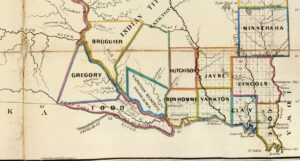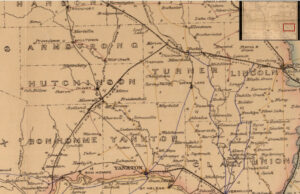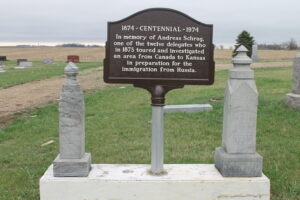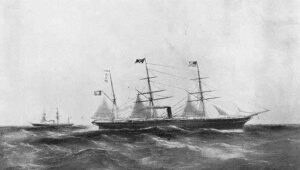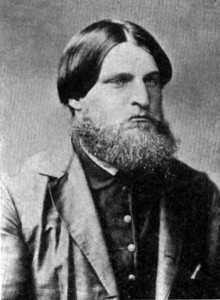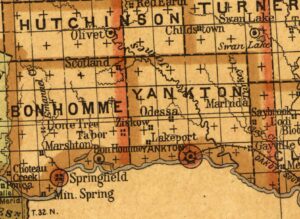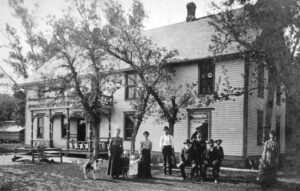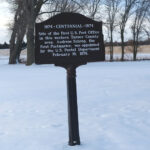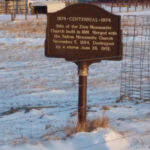The Story
To tell the story of Freeman, you have to go back to 1862 when the Dakota Territorial Legislature created Jayne and Hutchinson Counties in Dakota Territory. The county borders would be redrawn in 1871 to the present boundaries of Hutchinson County.
(Hutchinson County was named for John Hutchinson, the first territorial secretary. Maxwell City was established as the county seat in 1871. In October, 1873, the county seat moved to Olivet following an election).
In 1873, Hutchinson County was divided in two with the north half became Armstrong County. Armstrong County never fully organized and was annexed back into Hutchinson County in 1879.
In 1873 military reforms began in Russia. Mennonites “Germans from Russia” were losing their personal and religious freedoms so they decided to look for a new settlement. In 1873 twelve delegates (representing Mennonite & Hutterite villages in Russia) came to America to tour an area for possible immigration.
The twelve delegates were: Andreas Schrag, Tobias Unruh, Paul Tschetter, Lorenz Tschetter, Jacob Buller, Leonhard Sudermann, Wilhelm Ewert, Jacob Peters, Heinrich Wiebe, Cornelius Buhr, Cornelius Toews, David Claassen.
Jacob Peters, Heinrich Wiebe, and Cornelius Buhr came on the S.S. Scandinavian, arriving in Maine on April 8, 1873.
Paul Tschetter, Lorenz Tschetter, David Klassen, and Cornelius Toews came on the S.S Silesia, arriving in New York on May 20, 1873.
Tobius Unruh, Andreas Schrag, Wilhelm Ewert, Leonhard Sudermann, and Jacob Buller came on the S.S. Frisia, arriving in New York on May 29th, 1873.
August 15, 1873 another group of Russian Mennonite Immigrants sailed from Crimea, Russia to New York on the S.S. Hammonia.
August 21, 1873 Andreas Schrag, Tobias Unruh, and a few other delegates were in New York preparing to return to Russia when they met Daniel Unruh. Andreas Schrag and Daniel Unruh formed a friendship (the basis for Swiss and Low German Volyhnian Mennonite settlement in Dakota Territory).

Lorenz Tschetter (1819-1878)

Cornelius Toews (1836-1908)

Wilhelm Ewert (1829-1887)
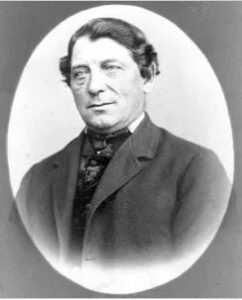
Leonhard Sudermann (1821-1900)
Jacob Peters (1813-1884)
Heinrich Wiebe (1839-1897)
Cornelius Buhr (1826-1885)
David Klassen (1813-1900)
Andreas Schrag (1821-1899)
Jakob Buller (1827-1901)
October 17, 1873 the Chicago, Milwaukee, St. Paul, & Pacific Railroad brought the first “Germans from Russia” to Yankton. (The Homestead Act of 1862, signed into law by President Abraham Lincoln, allowed settlers to get land, up to 160 acres, at little or no cost). The first families went north and started the Odessa settlement.
October 1873 Daniel Unruh arrived in Yankton and led a group of Mennonites north to Turkey Ridge Creek (445th Ave in Turner County) where they began the first Mennonite settlement.
May 1874, Andreas Schrag led a group from Yankton, to start the Childstown settlement two miles west of the Unruh settlement. About 200 Mennonite families came to Dakota Territory in 1874.
Around the same time Daniel Unruh came in 1873, 10 miles to the west a group Germans from Russia (Heilbronn Germany) came to America and began the Heilbronn settlement (281st Street).
In 1874 a group of Hutterite immigrants settled 8 miles west of Freeman on the James River, while other Mennonites settled around the Freeman area. The hard winter of 1874 left the settlers facing starvation in the spring of 1875, when a Relief Committee brought 1,000 sacks of flour from Yankton for the needy.
Friedrich Waldner, one of the first settlers in the Freeman area, filed on his land in 1878 (just south of the city park). On June 23rd, 1881 he bought 160 acres (NW section 35 of Grandview Township) from the United States. Fred kept ten acres and sold 150 acres of land to John Lawler who platted the original town site and sold the land to the railroad company.
In the fall of 1878 the Chicago, Milwaukee, and St. Paul Railway Company extended their line from Hull, IA to Dakota Territory and decided on a station in Freeman. The railroad came through town around 1879 and by 1881 the railroad was finished. An interesting story arises from 1881 as the railroad company was paying for the land. (In a story told by Dr. Andreas A. Wipf) “The railroad company was writing checks for the land they were buying from Friedrich Waldner, David Kleinsasser, and Mike Tschetter. Friedrich looked at his check and said to the railroad official “Jetzt bin ich ein freier Mann” translated, “now I am a free man”. The railroad official said, “What an appropriate name for a new town”).
When the railroad came to Freeman, Christian Buechler dismantled his store in Yankton, hauled the sections to Freeman on a hayrack, and reconstructed it on the corner of Third and Main Street, thus opening the Schamber Store and starting the first business in Freeman. The railroad soon brought immigrants and supplies for houses and stores.
On Highway 81 on the north edge of town there is a Mennonite and Hutterite immigration memorial commemorating the first settlers. The marker reads: “This marker commemorates the immigration of the first large groups of Swiss, Low German and Hutterian Brethren from Russia to Dakota Territory. The first group of fifteen families arrived in Yankton on October 17, 1873. However, a mass movement of several hundred families followed in 1874, with smaller groups arriving all through the 1870s. The Mennonites settled mainly in Hutchinson, Turner and Bon Homme counties”.
Our Visitor






 Users Today : 1
Users Today : 1 Users Last 7 days : 26
Users Last 7 days : 26 Users This Month : 5
Users This Month : 5 Users This Year : 670
Users This Year : 670 Server Time : 2025-06-04
Server Time : 2025-06-04
